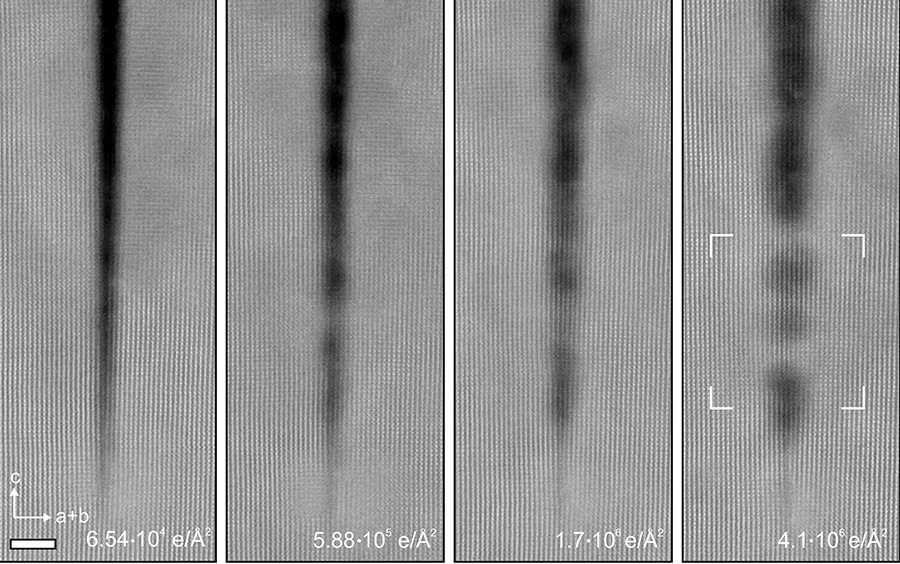In an unexpected new study, scientists at the University of Minnesota Twin Cities discovered that electron beam radiation, which they had previously believed damaged crystals, might help mend fissures in these nanostructures.
 These electron microscope images show how the crack in a crystal of titanium dioxide begins to “heal” with increasing electron doses. Image Credit: Mkhoyan Group, University of Minnesota
These electron microscope images show how the crack in a crystal of titanium dioxide begins to “heal” with increasing electron doses. Image Credit: Mkhoyan Group, University of Minnesota
The ground-breaking finding opens up a new approach to making more precise crystal nanostructures, which is essential for raising the efficacy and economy of materials used in almost all of the electronic devices that are utilized on a daily basis.
For a long time, researchers studying nanostructures were thinking that when we put the crystals under electron beam radiation to study them that they would degrade. What we showed in this study is that when we took a crystal of titanium dioxide and irradiate it with an electron beam, the naturally occurring narrow cracks actually filled in and healed themselves.
Andre Mkhoyan, Study Lead Researcher and Professor, Chemical Engineering and Materials Science, University of Minnesota
When employing the cutting-edge electron microscope at the University of Minnesota to investigate the crystals for a completely unrelated purpose, the researchers unintentionally made the discovery.
I was studying the cracks in the crystals under the electron microscope and these cracks kept filling in. This was unexpected, and our team realized that maybe there was something even bigger that we should be studying.
Silu Guo, Ph.D. Student, University of Minnesota
Several crystal atoms moved in tandem during the self-healing process, met in the center, and produced a particular kind of bridge that filled the gap. The researchers demonstrated for the first time how the electron beams might be effectively employed to create unique nanostructures atom by atom.
Whether it is atomically sharp cracks or other types of defects in a crystal, I believe it is inherent in the materials we've grown, but it's truly astonishing to see how Professor Mkhoyan’s group can mend these cracks using an electron beam.
Bharat Jalan, Professor, Chemical Engineering and Materials Science, University of Minnesota
The next step, according to the researchers, is to include additional elements, such as altering the crystal’s temperature or the electron beam's operating parameters, in an effort to enhance or speed up the process.
Mkhoyan added, “First we discovered, now we want to find more ways to engineer the process.”
The study team also comprised former graduate student Hwanhui Yun from the University of Minnesota and Ph.D. student Sreejith Nair from the Department of Chemical Engineering and Materials Science.
The National Science Foundation (NSF) played a major role in funding this study. This project was partially completed at the UMN Characterization Facility. The Department of Energy (DOE) financed the growth of the films, and the Minnesota Supercomputing Institute (MSI) contributed computational resources.
Journal Reference:
Guo, S., et al. (2023) Mending cracks atom-by-atom in rutile TiO2 with electron beam radiolysis. Nature Communications. doi:10.1038/s41467-023-41781-x